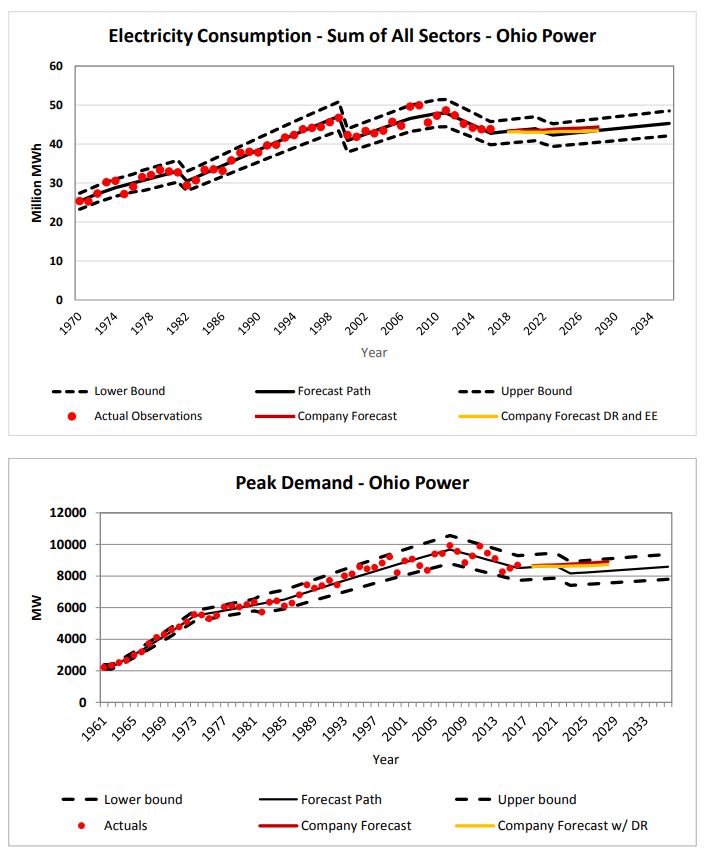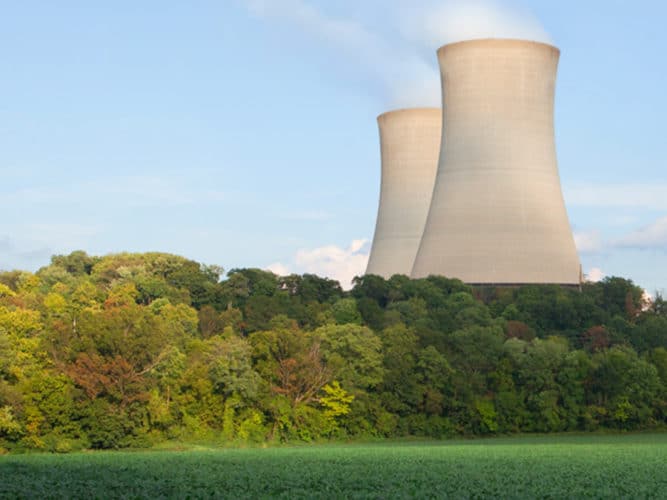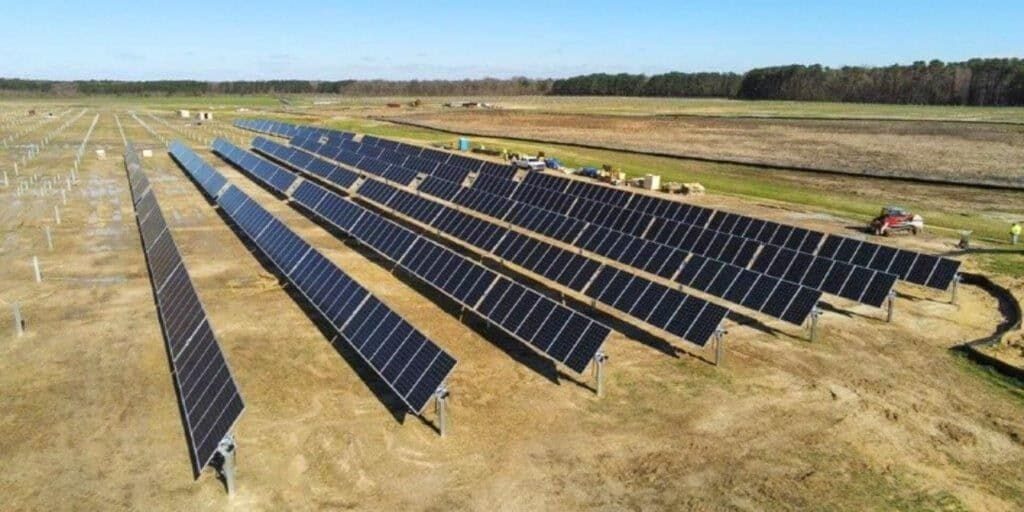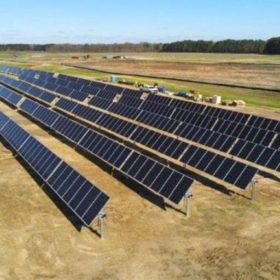After nearly a year of battle and debate, state regulators in Ohio have rejected American Electric Power’s bid to “rate base” its customers for the construction of a 300 MW project, which would be the largest in the state, as well as another 100 MW project, which would be tied for second largest.
For anyone wondering, rate basing is a mechanism that utilities have traditionally used to get their customers to pay for the up-front costs of building conventional power plants through their electric bills. Outside of Ohio, Florida utilities, including Tampa Electric and Florida Power and Light, have begun to rate base solar plants as well.
The designation of “need” stems from the testimony of a utility specialist at the PUC during hearings back in January:
Having determined that supply is sufficient to meet the needs of Ohio Power’s customers and to ensure that resource adequacy is maintained, Staff therefore finds that the Company has not demonstrated a need to construct any additional resources at this time.
The basis of this definition comes from the determination that there are enough generation resources currently to feed the electrical demand of Ohio. This was illustrated by the below charts, which projected need vs. how actual electricity demand fell within those bounds:

Then point was also raised that the most recent PJM Interconnection reliability auctions for 2021/22 ended with a reserve margin well in excess of required targets.
This is AEP’s second major project rejection in as many years. In 2018, regulators in Texas shot down a 2 GW Wind Catcher project after it was deemed the project didn’t provide enough benefit.
Not necessary, not enough benefit, there’s a pattern forming here.
In terms of the impacts of the rare basing, AEP customers would have seen an increase of about $0.28 per month. This is in comparison to the 3,900 jobs and $400 million GDP increase that the utility expected the projects to bring to the state.
An unfortunate aspect to this rejection is that the affected projects represent a capacity greater than Ohio has seen to date. To date, Ohio has put on-line 231 MW of solar, good for 28th in the nation. These projects, in conjunction with the 100 MW municipal solar project announced yesterday by the mayor of Cincinnati, would have added more than 200% capacity to that mark. this would bring Ohio to roughly 730 MW of installed solar capacity which, as capacities currently stand, would be good for 19th in the nation, below Virginia.
The determinations on these projects represent a larger conversation about that value Ohio places on its genration resources. In July, the state passed HB 6, a bill which:
- lowered the state’s Alternative Energy Portfolio Standard to 8.5% by 2026, eliminating it thereafter
- eliminated the solar carve-out in the AEPS
- created a new system of credits for nuclear & renewable power plants, 88% of which will go to two nuclear power plants
- requires the state’s utilities to charge their customers up to $0.85 per month and raise up to $170 million annually from their customers to fund the new credit system
- allows utilities to charge their customers up to $1.50 each month to create a fund to bail out coal plants owned by the Ohio Valley Electric Corporation (OVEC)
So is this decision by Ohio regulators an actual reflection of the state’s generational needs, or another drastic measure taken in order to maintain the status quo of expensive and dated resources.
This content is protected by copyright and may not be reused. If you want to cooperate with us and would like to reuse some of our content, please contact: editors@pv-magazine.com.









Wow, the Legislature and the PUCO have thrown the ratepayers under the bus. This 400MW project represents $0.28 a month on electric bills. Over the past 4 or so years, competitive bids have brought in solar PV, wind and in some cases energy storage much cheaper than building a natural gas plant, retrofitting a coal plant to natural gas boilers or building a new gas Peaker plant. If the target was three times this solar PV project or 1.2GW, they could replace the 1950’s coal fired plant and probably bring the cost to the ratepayers down to less than $0.28 per project. Something more akin to $0.65 per month which would replace the coal fired plant completely. They are wasting time and money, the coal fired plant still needs to be decommissioned sooner than later.
How myopic of them.
I am one hundred percent for total renewable energy. Greta Thornburg is a living hero. Outdated coal gas or nuclear are a millstone around our Collective necks. We must stop them at any cost. We must do this to slow down our Earth sixth mass extinction oh, but in the short run 2 give a hint of a quality future to our grandchildren
We must stop all gas, coal, and current nuclear power generation immediately. Renewable Power Generation is cheaper. And it will provide a quality option to our grandchildren. We must think about them oh, and it also immediately benefits us as well. That is why carbon power generation is patently idiotic, except for corporate capitalists who will do anything with greed in need.
To David K.:
Keeping solar, and investing in new, IV gen. LFTR MSRs (see Alvin Weinburg here) would facilitate reductions of hi-level nuclear waste to a manageable time scale, while providing usable energy. It would also greatly reduce the volume of this waste currently being stored near Tulsa, OK.
All energy sources are (indirectly) nuclear related. We should support phasing out coal, oil, nat. gas for electric utilities, without compromising our ability to move to next level nuclear, the only technology which could be sufficient base load power to both desalinate the huge amounts of seawater into usable drinking water AND reducing nuclear waste to a manageable (i.e. – 300+ year) timeframe.
Alternative energies are wonderful, but don’t forget about our need for jobs, water, and the potential to export our coal, nat. gas & oil to other countries to decrease our trade deficit, give us time to move away from domestic use of oil, and to implement the massive building remodeling necessary to stop global warming and realize the needed drop from 42 % of energy usage in the building sector to something much less. As it took many decades to build them, it will take decades to reverse.
The projected demand is very odd. Clearly, the economic growth they forecast is quite poor and the advent of the electric transportation system is also discounted. Perhaps the utility is expecting a return to the economic period of 2008 – 2016?
They must have expensive accountants doing the projections.
Some of the changes in electrical usage have nothing to do with the economy. Ohio Edison gave all of its interested customers a box of LED bulbs and other devices to lower fuel use for free. After they did this they have noticed a decrease in electrical usage. I have heard various accounts but I think it is more than they thought it would be.
There was another article written today that stated that the refusal of the State of Ohio to include these two solar plants in the rate base does not automatically keep them from being built.
That very thing is what people don’t seem to SEE, when they themselves consider solar PV for their homes and perhaps businesses. It’s the same circular thinking by the electric utilities themselves. “They say, We need you (the ratepayer) to save energy or we’ll have to build another power plant and increase your electric rates to pay for it. So, folks respond, install their LED light bulbs, put a timer on the hot water heater to control when it will be needed, replace old appliances with energy star appliances and then the utility doesn’t sell as much electricity as it did before. Crying to the PUC, the utility presents a rate case to raise electricity rates due to “lost revenues”. It’s the same lousy business model and excuse when one pays it forward and has their own solar PV or wind generation system installed at their homes. Take responsibility for your own energy use each day and get off of the “electricity rate increase Merry-Go-Round.”
To your last point: “There was another article written today that stated that the refusal of the State of Ohio to include these two solar plants in the rate base does not automatically keep them from being built.”
AEP doesn’t seem all that interested what Ohio’s Lamesslature or PUCO “thinks” is proper. AEP understands the actual “value” of alternative energy generation, even when it IS intermittent, energy storage can take up the slack. The question there is how much? How may hours? How many days of storage is necessary in a particular region? With environmental requirements that are still in effect, the cost of trying to upgrade old fueled generation assets or change over from say coal fired to natural gas fired still has a longer amortization period than non-fueled generation with energy storage. The less time an asset is on the “books”, the less interest will be paid by the ratepayers and the sooner the asset becomes generation effective and debt free.
“November 29 (Renewables Now) – Canada’s Innergex Renewable Energy Inc (TSE:INE) has sealed an off-take deal for electricity that will be produced from a 200-MW solar photovoltaic (PV) project in Ohio.” It appears as though Innergex can build large scale solar in Ohio. The project is expected to be completed next year. Unfortunately the facility is being built on farmland. Would rather they build it on parking lots or something like that.
After repeated attempts to work with the Ohio Legislature to revise its standards for wind turbines to no avail I learned that it is better to work around them. Ohio’s standards for wind farms are prohibitive yet some wind farms are still being built. Perhaps the same for solar!